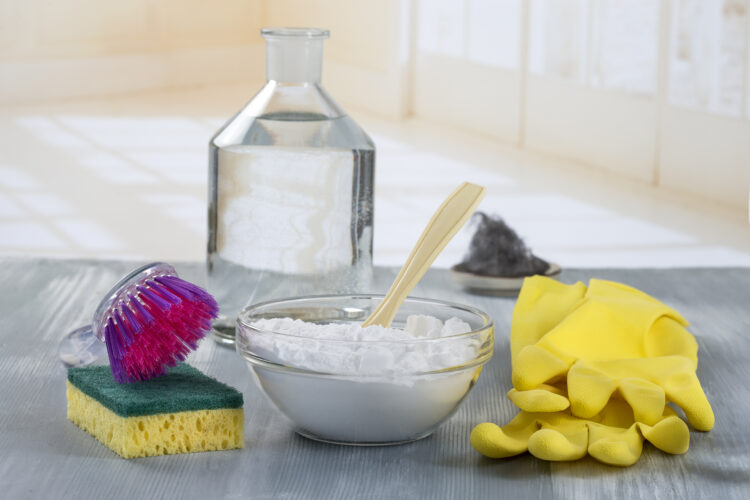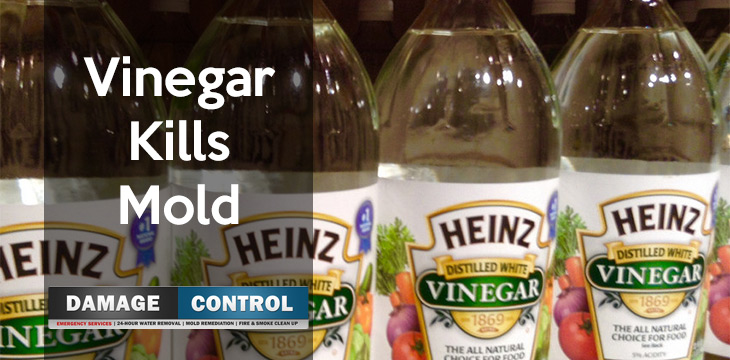There are many household remedies that people hold to their hearts. People have remedies for a few sicknesses, infections, and pesticides. However, one thing that many people consider is a way to kill household mold: vinegar.
Does vinegar kill mold? There are a few mixtures out there that you can add vinegar to that kill mold. Vinegar works fine as a light-duty mold, mildew killer, and cleaner. However, you cannot add many things to vinegar to make it more effective for cleaning small areas of mold growth.
Household remedies can be temporary if they work at all. Still, you should consider hiring a local mold mitigation service such as Damage Control 911 if the area is over ten sq ft of surface area.
Even the smallest spore can trigger an entirely new mold colony somewhere else in the house. Household remedies are fine for getting mold out of things like clothes or furniture. However, if it’s in the attic, basement, or walls, you might need a professional’s help. After all, mold can do a lot of bad things to you.
Does vinegar kill mold?
The big question of this article is if vinegar kills mold. Since vinegar is acidic, it negatively affects microbes, organic or otherwise. Mold is organic and is often killed by vinegar in short order.
It is a great tool to use to combat this radical fungus if it is in your home. However, it only kills around 80% of mold families, so it is not perfect, but still effective in small areas.
But it can help lower the amount of mold in your home and prevent it from returning.
Not even bleach can eliminate all molds unless you’re thorough with it. It can come back if you miss even a single spore. That includes the spores that are floating in the air already, too.
You could see the mold return over a few days if the area affected is not encapsulated with the correct treatment solutions, such as Microban. Either way, vinegar can combat mold, but it shouldn’t be the only thing you do. Ultimately, you may need a mold remediation specialist in your home to remove it.
What is a good use for vinegar?

Mold can get on many things. The attic and basements are extremely prone to mold, and walls are built with drywall, but they can also get on bathroom tiles and grout. Whenever you get mold on your clothing, vinegar can be used. If the clothes are colored, vinegar shines.
However, you can also use it on other fabrics like draperies. Curtains and carpeting can be cleaned thoroughly with vinegar but not baking soda. A simple mix of apple cider vinegar and your normal detergent will usually get mold out of these fabrics.
It may require an additional wash or two to remove the spores of your fabrics fully, but they will be clean in no time. With carpet, you'll need to use straight vinegar mixed with water in your carpet cleaner and extractor.
Why is mixing baking soda with vinegar a bad idea?
Mold is a bad thing to have in your home, regardless of the surface it is on. Vinegar is a good tool to use whenever it comes to killing mold and preventing it from growing. It isn’t the perfect way to remove it, but it can prevent it from spreading too much.
Vinegar is a great tool for specific tasks, but not with baking soda. Baking soda naturalizes acid, making vinegar such a powerful natural cleaner.
The second you add baking soda to vinegar, you made it completely inert as a cleaner. Once mixed, it's nothing more than a horrible drink that few could fathom, much less stomach.
Warning: If you have over ten square ft of mold on any surface, you must call for professional help. The risk to your family's health and home is not worth attempting to do if the project is too large to be properly contained absent professional help.
You may end up spreading mold instead of eliminating it. Both water damage and mold can lower the value of your home, so do your due diligence before starting any DIY project according to official recommendations at local, state, and federal levels.

